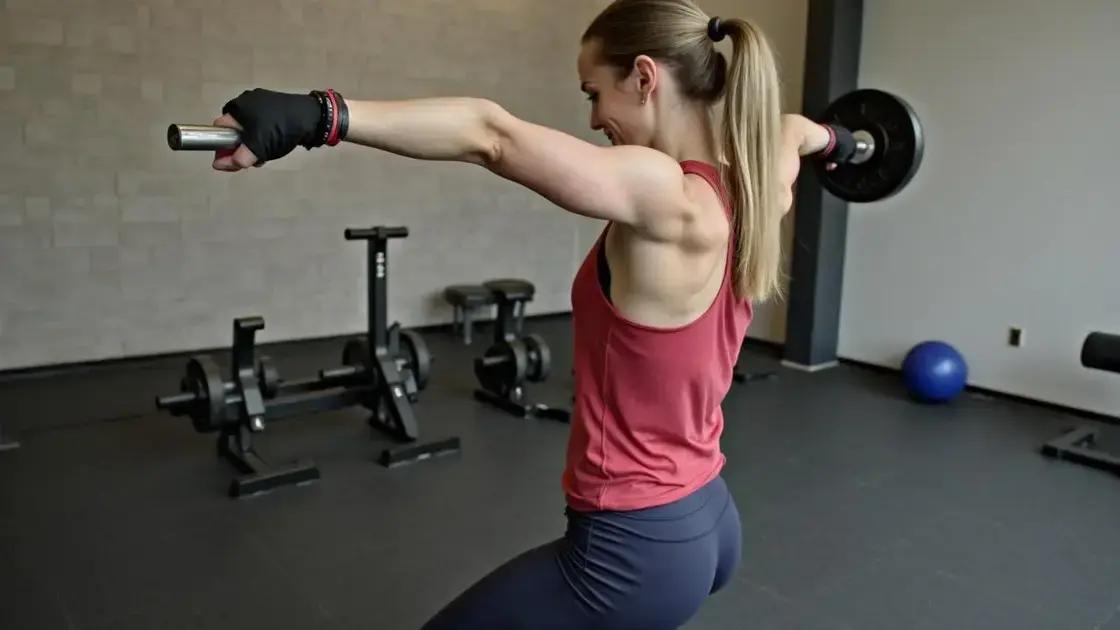Farmer’s carries are a powerful exercise that enhances total body strength by engaging multiple muscle groups, including the core, shoulders, and forearms. This functional movement improves grip strength, posture, and stability, making it an effective addition to any fitness routine. By incorporating farmer’s carries correctly into your workouts, you can significantly boost your overall strength and endurance.
If you’re looking to build total body strength, understanding how to use farmer’s carries can transform your workout routine. This exercise not only enhances muscular endurance but also boosts grip strength, making it a staple in strength training. In this article, we’ll guide you through the basics of farmer’s carries, their benefits, proper techniques, and how to seamlessly fit them into your existing workouts.
Understanding Farmer’s Carries: The Basics

Farmer’s carries are a popular strength training exercise, often used to build overall body strength and stability. At their core, farmer’s carries involve walking while holding weights in each hand. This simple, yet effective movement engages multiple muscle groups, helping you gain functional strength that translates well to daily activities.
What You Need
To perform farmer’s carries, all you need is a pair of weights. These can be dumbbells, kettlebells, or any other object that you can securely hold in your hands. Start light to master your form before progressing to heavier weights. Proper footwear and a spacious area are also essential for a safe, effective workout.
Muscles Engaged
As you perform farmer’s carries, several muscle groups are activated, including:
- Forearms: Your grip strength improves as you hold onto the weights.
- Shoulders: The deltoids stabilize your arms throughout the movement.
- Core: A strong core is critical for maintaining balance and posture during the carry.
- Legs: The quadriceps and hamstrings work hard to keep you moving forward.
This exercise not only strengthens these muscles but also improves your overall coordination and balance.
Form and Technique
To do a farmer’s carry correctly, follow these steps:
- Stand tall with a weight in each hand, arms at your sides.
- Engage your core and keep your shoulders back.
- Step forward with one foot, followed by the other, maintaining a straight posture.
- Keep your head up and eyes forward as you walk.
Maintaining good form is crucial for preventing injuries and maximizing the benefits of the exercise.
Benefits of Farmer’s Carries for Your Body

Farmer’s carries offer a multitude of benefits for your body, making them a valuable addition to any strength training program. One of the primary benefits is enhanced grip strength. As you hold weights and walk, your forearms and hands work hard, which builds strength that is useful in many daily activities and other exercises.
Core Stability
Another major advantage is the improvement in core stability. Your core muscles, including the abs and lower back, engage significantly while performing farmer’s carries. This engagement helps stabilize your spine, leading to better posture and reduced risk of injuries during workouts.
Functional Strength
Farmer’s carries also develop functional strength. This form of strength is critical for real-life movements, like lifting heavy grocery bags or carrying children. By training your body to lift and walk simultaneously, you prepare yourself for everyday tasks, making life easier.
Improved Posture
In addition, farmer’s carries can contribute to better posture. As you learn to keep your shoulders back and your chest up during the exercise, you strengthen the muscles that support proper alignment, reducing the likelihood of slouching or back pain.
Caloric Burn
Finally, farmer’s carries can aid in burning calories. While they may seem like a simple exercise, carrying weights over distance engages many muscles, which can elevate your heart rate. This makes farmer’s carries an efficient way to combine strength training with cardiovascular benefits.
How to Perform Farmer’s Carries Correctly

Performing farmer’s carries correctly is essential for maximizing benefits and minimizing injury risk. Follow these steps for proper form:
Step 1: Choose the Right Weights
Select weights that challenge you but allow you to maintain good form. Start light to work on your technique before progressing to heavier weights.
Step 2: Stand Tall
Begin by standing straight with your feet shoulder-width apart. Hold a weight in each hand, letting your arms hang at your sides. Keep your shoulders back and your chest lifted to maintain good posture.
Step 3: Engage Your Core
Before beginning to walk, engage your core muscles. This helps stabilize your spine and supports your back throughout the exercise.
Step 4: Start Walking
Begin to walk forward slowly. Take long, controlled steps while keeping your head up and eyes looking straight ahead.
Step 5: Maintain Form
As you walk, ensure that your arms remain at your sides without swinging. Focus on keeping a steady rhythm for the duration of the carry. Your grip should be firm but not overly tight.
Step 6: Breathing
Remember to breathe! Inhale through your nose and exhale through your mouth. This will help you stay relaxed and focused during the exercise.
Step 7: Distance and Duration
Start with a short distance (10-20 feet) and gradually increase as your strength improves. Aim for 30-60 seconds of continuous walking to enhance your endurance.
Incorporating Farmer’s Carries into Your Routine

Incorporating farmer’s carries into your workout routine can be done seamlessly and effectively. Here are some ways to add this exercise to your regimen:
1. Warm-Up
Start your workout with farmer’s carries as part of your warm-up. This helps activate your muscles and prepares your body for more intense activities. Aim for 2-3 sets of 20-30 feet to get your blood flowing.
2. Superset with Other Exercises
Combine farmer’s carries with other strength training exercises. For example, do a set of squats followed by farmer’s carries. This approach maximizes efficiency and challenges your muscles in different ways.
3. Strength and Endurance Workouts
Incorporate farmer’s carries into strength or endurance workouts. For instance, during a functional training session, you can include them as a circuit. Perform 3-4 rounds, carrying weights for specific distances or time intervals.
4. Use as a Finisher
End your workout with farmer’s carries to exhaust your muscles. Doing this as a finisher increases the intensity and ensures you target your grip, core, and overall strength. Carry weights for 30-60 seconds as your final challenge.
5. Adjusting Frequency
Consider how often you include farmer’s carries in your routine. Starting with once a week is a good idea, and you can increase frequency as your strength builds. Just make sure to listen to your body and allow for adequate recovery.
6. Track Your Progress
Keep a record of your performance. Track the weights lifted, distances walked, and duration of the carries. This will motivate you to improve and push your limits over time.
Incorporating Farmer’s Carries for Total Body Strength
Farmer’s carries are an exceptional exercise that can enhance your overall strength, grip, and stability. By understanding the basics, benefits, and proper technique, you can effectively integrate this exercise into your fitness routine.
Regularly performing farmer’s carries not only builds functional strength but also improves core stability and posture. Whether you use them as part of your warm-up, as a superset, or as a finisher, the key is consistency.
As you track your progress and gradually increase the weights and distances, you will see significant improvements in your strength and endurance. Don’t underestimate the power of farmer’s carries in transforming your body and enhancing your physical performance.
Introducing this effective exercise into your regimen can lead to a more robust and capable physique, contributing to your overall fitness goals.
FAQ – Frequently Asked Questions about Farmer’s Carries
What are farmer’s carries?
Farmer’s carries are a strength training exercise where you walk while carrying weights in each hand, promoting total body strength and stability.
What muscles do farmer’s carries target?
Farmer’s carries work multiple muscle groups, including the forearms, shoulders, core, and legs, enhancing grip strength and overall stability.
How do I incorporate farmer’s carries into my routine?
You can include farmer’s carries as a warm-up, during strength training supersets, or as a finisher to your workouts for added intensity.
What weights should I use for farmer’s carries?
Start with lighter weights that allow you to maintain proper form. As your strength increases, progressively challenge yourself with heavier weights.
Can farmer’s carries help improve my posture?
Yes, performing farmer’s carries promotes better posture by engaging core and shoulder muscles, helping to stabilize your spine and reduce slouching.
How often should I perform farmer’s carries?
Start with once a week, and as you gain confidence and strength, you can gradually increase the frequency based on your workout goals.













